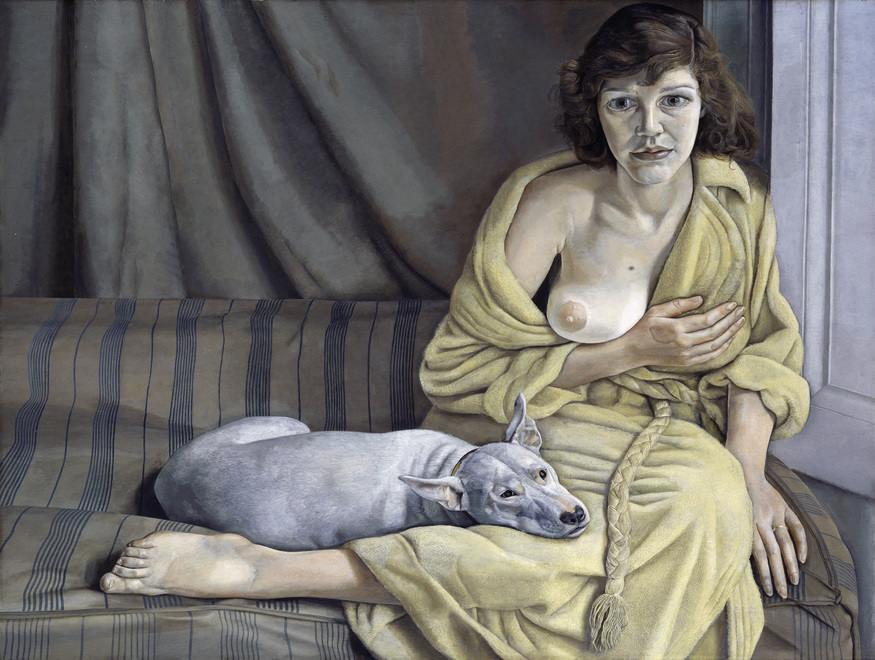Most people view portraits as the lesser cousins of landscapes. So how did Lucian Freud make such a successful career by focusing primarily on portraiture? By ripping up the rules of classical art and invigorating his works with a fresh and deeply emotive approach.
In a classical portrait, the subject always makes eye contact with you to create the sensation that they are posing for you in an unnatural setting. But in Freud’s portraits they rarely make eye contact, either looking away or seeming to look beyond you, transforming you from viewer to voyeur. In ‘Naked Girl’, the girl's posture is so defensive and vulnerable posture you feel you have to look away lest you feel guilty for what you’ve done to her.
This exhibition is a retrospective of seven decades of Freud’s portraits and it features more than 100 of his works. As well as journeying through his career, it also tells his life story through the work. He only painted the people that mattered to him and there are many portraits of his close friends and family members on display, giving insight into his relationships with them.
Freud was notorious for requiring sitters to pose for hours and the discomfort displayed by some of his models is palpable in the paintings on display.
With the exception of those featuring his mother, Freud’s portraits were rarely flattering but they tell you almost as much about the artist as they do about his subjects. You have to question whether his family members in ‘Large Interior, W11 (after Watteau)’ are looking uncomfortable because of the way that they feel for each other, or because of their relationship with Freud.
As Freud played a part in organising this exhibition before his death last year, this is likely to be the last chance you will have to get into his mind and understand why he is considered one of the 20th century’s greatest artists.
Lucian Freud: Portraits is on at the National Portrait Gallery until 27 May. Admission is £14 for adults, concessions available.










